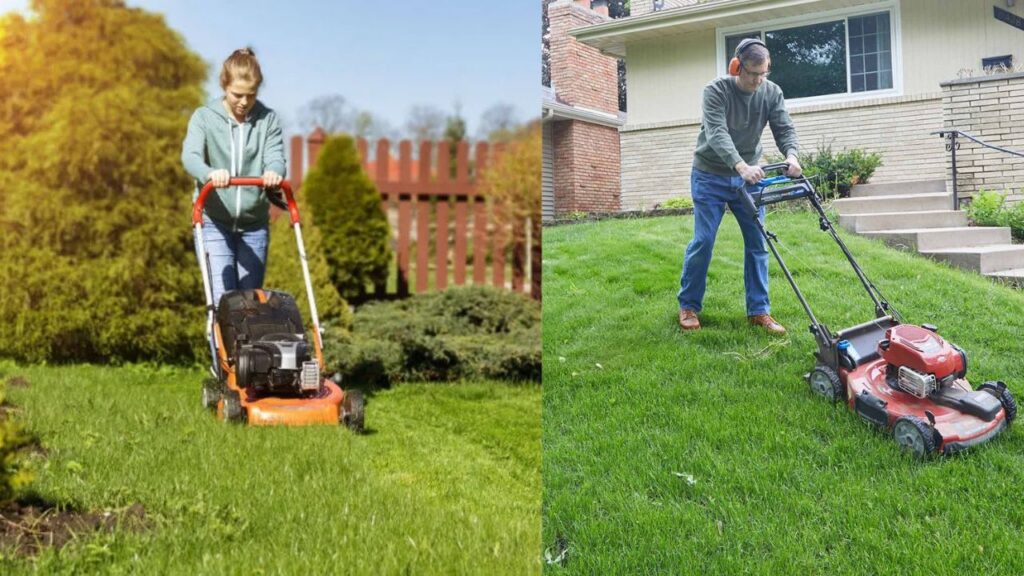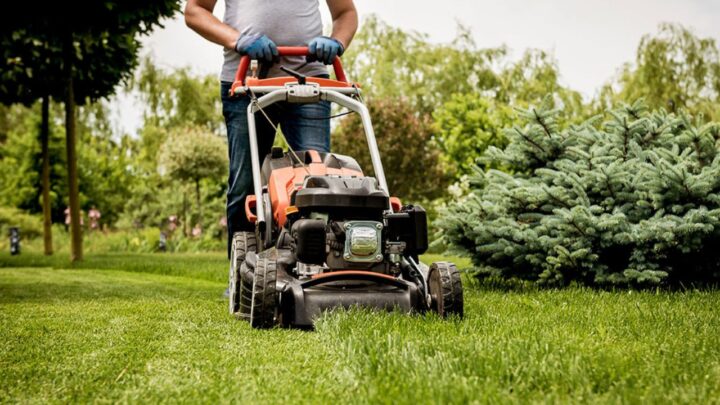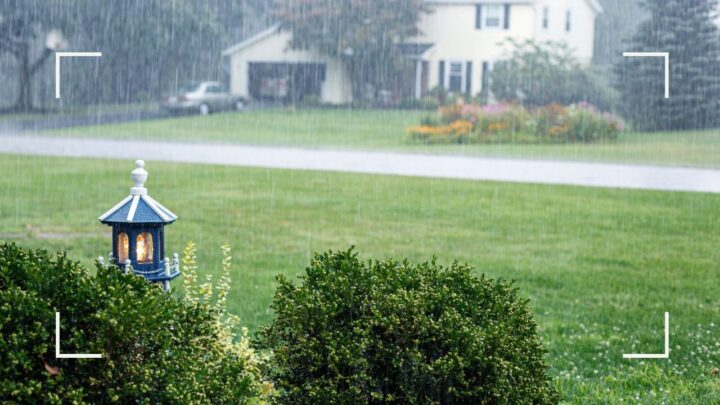Cut the Lawn Before or After It Rains – Should You Cut the Lawn Before or After It Rains? Experts finally reveal what’s best for healthy grass and safe mowing. Discover the right timing and how it impacts your lawn’s growth and look.

Best Time to Mow the Lawn – Before or After Rain?
Cutting the lawn at the right time can make a big difference in how healthy and green it looks. Many homeowners wonder if it’s better to mow before the rain or wait until after it passes. Experts agree: the right timing depends on safety, grass health, and the weather conditions.
Mowing just before rain can sometimes cause stress to the grass, while mowing immediately after rain can damage wet soil and cause clumping. So what’s the ideal solution? It’s all about moisture levels, mower safety, and how tall your grass has grown. Let’s break it down in a beginner-friendly way.
What Happens If You Mow a Wet Lawn?
Mowing a wet lawn may seem convenient, but it can create several problems. Here’s what you should know:
- Wet grass tends to bend and clump, making your mower less effective.
- It can clog your mower’s blades, leading to uneven cuts and damage.
- Slippery surfaces increase the risk of accidents or mower malfunction.
- Cutting wet grass can leave deep ruts in the soil, harming root systems.
- Clumped clippings can suffocate grass, creating brown patches.
For the best results, wait until the lawn has dried — typically a few hours to a day after rain, depending on sunlight and temperature.

Benefits of Mowing Before the Rain
If your grass is too long and rain is expected, mowing *before* the rain can be helpful. Here’s why:
- You get a clean, even cut without wet clumping issues.
- Rainwater helps settle clippings into the soil as natural mulch.
- Less chance of lawn disease caused by wet, damaged blades of grass.
- Dry conditions make your mower run more smoothly and safely.
Just make sure to mow a few hours ahead of the rain so the grass isn’t stressed or freshly cut during a downpour.
When to Avoid Mowing the Lawn
Certain times are not good for mowing, no matter what the weather says:
- Right after heavy rain — the soil will be too soft and muddy.
- During the heat of the day — it can stress your lawn and dull the blades.
- When the grass is still dewy — early morning moisture causes similar problems as rain.
- At night — limited visibility and dampness increase risks.
Always aim for a dry, mild part of the day — ideally late morning or early evening when the lawn is dry.
Step-by-Step Guide to Mowing at the Right Time
- Step 1: Check the Weather Forecast
Before grabbing your mower, check if rain is due in the next few hours. If it’s going to pour soon, it’s better to wait. Light rain? You might still have time to mow safely if the lawn is dry.
- Step 2: Feel the Grass and Soil
Touch the lawn with your hand or step lightly on it. If the grass sticks or the soil feels mushy, don’t mow yet. Let it dry to avoid clumping and root damage.
- Step 3: Set Your Mower Height
Adjust the mower height based on your grass type. Never cut more than one-third of the grass blade in one go — this keeps the lawn healthy and less stressed during weather changes.
- Step 4: Clear Debris from the Lawn
Remove sticks, leaves, or kids’ toys before mowing. Wet debris can clog blades or damage your mower, especially after rain.
- Step 5: Mow Slowly and Evenly
Use slow, even passes. Rushing can cause uneven cutting and may rip wet grass instead of slicing cleanly. Always keep your blades sharp.
- Step 6: Wait Before Watering Again
If you mow after rain, skip watering for a couple of days. Let the lawn absorb natural moisture and rest. Overwatering soon after mowing can cause fungus or rot.
Extra Tips for a Healthy Lawn
- Sharpen your mower blades every 1–2 months.
- Never mow when the lawn is soggy or muddy.
- Use a mulching mower to recycle nutrients back into the soil.
- Alternate your mowing pattern each time to avoid soil compaction.
- Leave clippings on the lawn (when dry) for natural fertilization.

FAQs
Is it okay to mow right before it rains?
Yes, as long as the lawn is dry and rain is at least an hour away. This prevents stress and lets you avoid post-rain issues like clumping.
Can mowing wet grass ruin my lawn?
It can. Mowing wet grass leads to uneven cuts, soil damage, and mower problems. Always wait until it’s dry.
How long should I wait to mow after rain?
Wait until the grass and soil are completely dry — usually 6 to 24 hours depending on weather, sunlight, and soil drainage.
What happens if I mow during light rain?
It’s not recommended. Even light rain creates wet conditions that make mowing unsafe and harmful to your lawn’s appearance and health.
With the right knowledge, your lawn can stay lush, green, and beautiful — rain or shine. Always remember: a little patience after rain can save your grass from damage and your mower from clogging. Keep learning, keep mowing smartly, and enjoy the fresh look of a well-timed cut!





